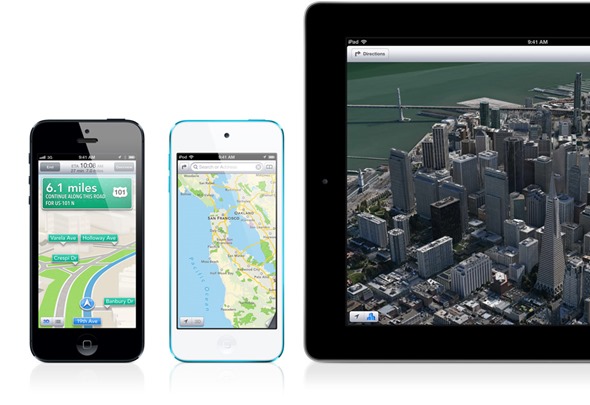It shouldn’t really come as a great shock to anyone by now that any device running iOS 6 no longer comes with Google Maps installed as the default mapping platform. In fact, it doesn’t come as part of iOS 6 in any shape or form. The removal of the tried and tested Maps app as well as Apple’s decision to roll their own vector-based mapping solution has been the discussion of the week so far due to the fact that users have managed to find some rather large inadequacies with Apple’s own creation.
The debate has risen to a new level over the last twenty-four hours after it became public knowledge that Apple didn’t actually need to remove Google Maps from iOS this early and that they actually had the option to offer Google’s comprehensive mobile mapping solution to users for another twelve months at least. That’ll come as a bitter pill to swallow for some users who have chosen to grin and bear the current iOS maps setup, not because it handles all of their needs, but because they believed Apple had come to the end of their license agreement with Google.
We will probably never know the full true story of why the two companies parted ways, but sources are indicating that the mapping rift was caused by Google’s reluctance to update their iOS app to include turn-by-turn navigation. iOS and Android are the two largest and popular mobile operating systems available on the market and Apple were reportedly a bit miffed that the Android version of Google Maps app had been dishing out navigation goodness to users for a number of years. We are all aware of the rivalry between to the two operating systems as they compete against one another for top spot, so it doesn’t really come as a surprise that Apple weren’t too happy about having an app that lacks the functionality of its Android counterpart.
Although the iOS platform belongs to Apple and the Maps app has been a part of that since day one, the mapping technologies and data actually belongs to and is created by Google. It doesn’t take a genius to understand why they would be reluctant to hold back some features, especially as they have pumped in so much finances and company resources into creating what is viewed as the best mapping solution available on mobile devices. Rather than giving Apple and iOS all of the power, it looks like they have forced Apple’s hand into creating a rival service that could theoretically form the blueprint for mobile mapping.
(via AllThingsD)
You may also like to check out:
You can follow us on Twitter, add us to your circle on Google+ or like our Facebook page to keep yourself updated on all the latest from Microsoft, Google, Apple and the web.

